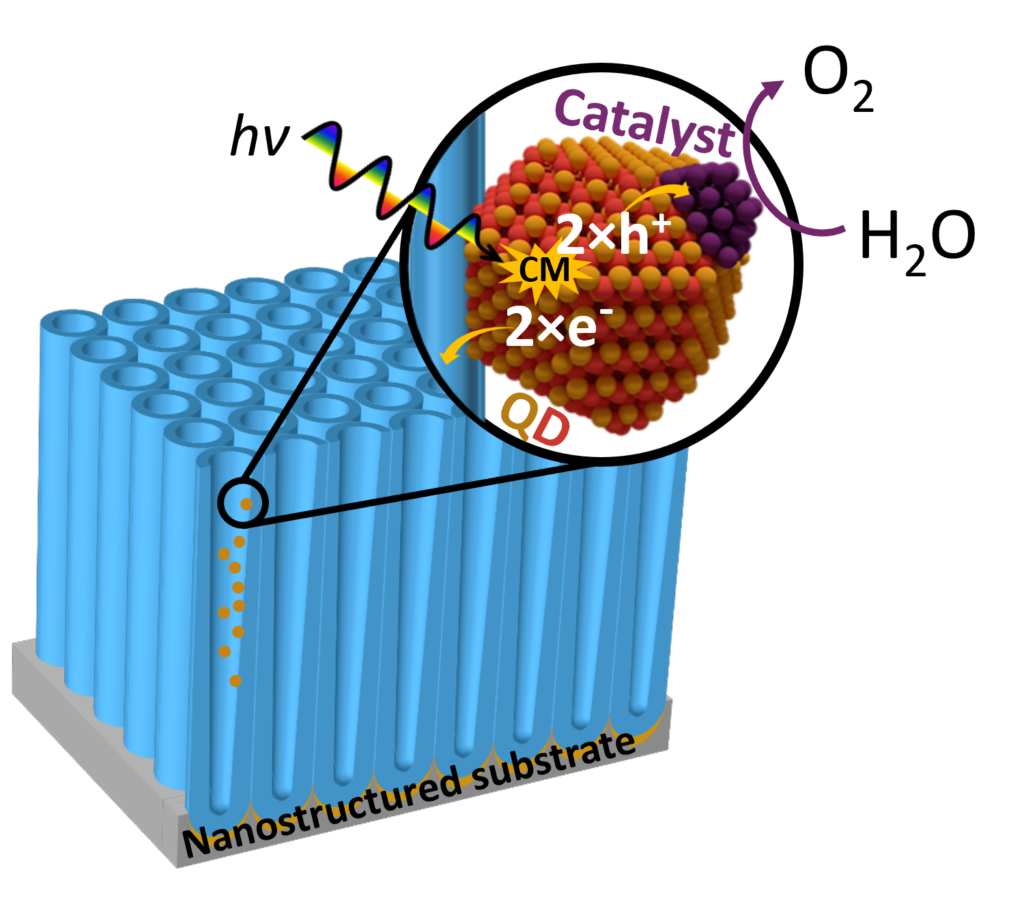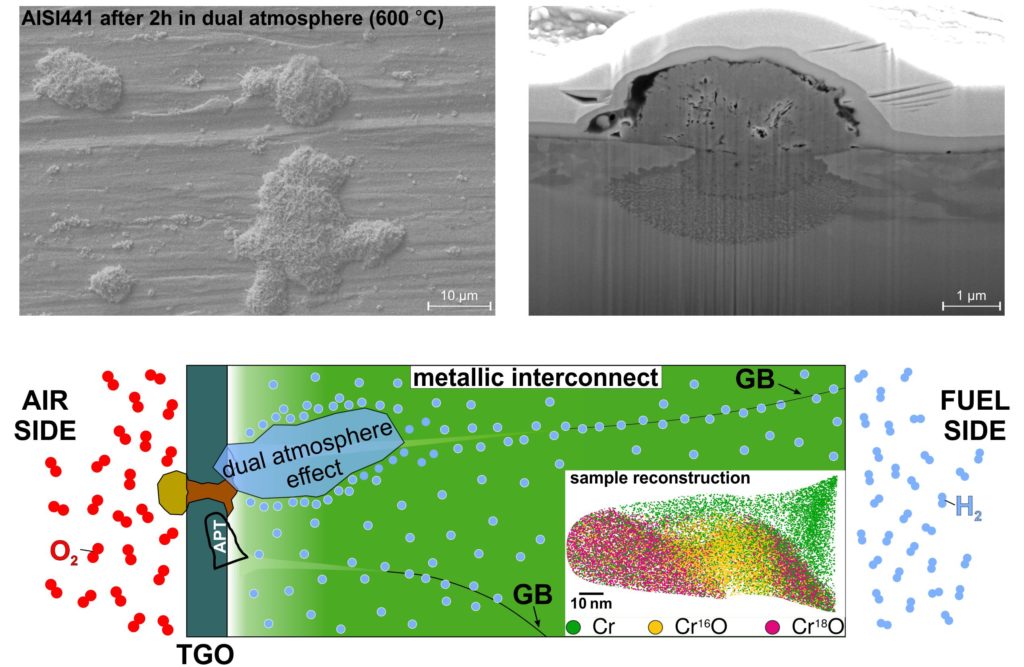EAM Starting Grant 2021/2022
Funding of new research projects – three EAM Starting Grants awarded
As in 2020, the EAM awarded the EAM Starting Grant to excellent young FAU researchers. The EAM starting grant should give the recipients the chance to pursue their own research projects and thus gaining a boost for a successful academic career. The grant is intended to bring new contributions and ideas into EAM’s research activities and aims at encouraging awardees to use the grant as seed funds for the preparation of new proposals.
This year, four awardees were chosen:
Quantum-Enhanced Spectral Technology (QuEST)
Dr. Ryan Crisp, 33
Post-Doctoral Researcher at the Chair for Chemistry of Thin Film Materials
The major scientific challenge of the current generation is curtailing the effects of climate change. Increased focus must be placed on utilizing renewables for producing fuels to achieve the EU goal of a low-carbon economy by 2050. To take advantage of renewable fuel production, we need to answer the questions: how do we drive chemical reactions that require large/concentrated amounts of energy, and do so using more clever designs? Nanomaterials enable a unique approach to these challenges, providing the ideal framework to understand the photophysics and photochemistry involved. In this project, quantum effects arising in semiconductor quantum dots (QDs) are exploited to improve the kinetics and efficiency of photochemical reactions. The work develops a new class of solar-to-fuel systems to investigate both the fundamental processes involved in photo-catalysis and to apply the discoveries to working devices. Here, we synthesize novel BaZrS3 perovskite QDs, develop new deposition methods for the QDs while tuning the energy band levels, and test the efficiency and the kinetics of the oxygen evolution reaction.

Contact: ryan.crisp@fau.de
Webpage: https://www.chemistry.nat.fau.eu/ctfm-chair/crisp-group/
Wireless Electrical Neuromodulation via Magnetoelectric Nanocomposites
Prof. Dr. Danijela Gregurec, 39
Juniorprofessor for Sensory Sciences
at the Chair of Aroma and Smell Research
Deep brain stimulation (DBS) is electrical stimulation that relieves motor symptoms of Parkinson’s disease (PD). In the animal models of neurological and psychiatric diseases, DBS has improved understanding of mechanisms and neural circuits underlying these disorders. DBS, however, requires permanent implantation of robust lead electrodes in deep brain structures, limiting behavioural studies in animals, and in humans, it results in mental, physical, and hardware-related unwanted effects. Considering current limitations, an imperative in the development of new wireless technologies for brain neurostimulation, and the focus of this project is on development of biocompatible and stable nanomaterials capable of remotely delivering electrical stimuli to neuronal membranes with temporal and spatial precision.

This project will design and optimize structurally and physically defined nanocomposite capable of generating local electrical fields to modulate electrical impulses of deep brain neurons under slowly varying external magnetic fields. These nanocomposites comprise biocompatible magnetostrictive core and a piezoelectric shell where actuation and polarization of nanocomposites relies on the conversion of magnetic to kinetic energy within the composite that facilitates charge separation through direct magnetoelectric effect.
Preparative methods include hydrothermal synthesis of vortex domain nanoscale mechano transducers, sputtering of magnetostrictive cores, nanosphere templating, electrospinning and electrodeposition of piezoelectric components.
These magnetoelectric materials will be evaluated and optimized for their biological applications in vitro and ultimately applied in rodent models to evaluate the potential for translational applications in treatments of neurodegenerative diseases.
Contact: danijela.gregurec@fau.de
Webpage: https://www.chemistry.nat.fau.eu/aroma-smell-research/prof-dr-danijela-gregurec/
ROLE OF HYDROGEN IN HIGH-TEMPERATURE CORROSION
Dr. Martin Weiser, 35
Post-Doctoral Researcher at the Chair of General Materials Properties
Correlative analysis of the hydrogen effect on short-circuit diffusion during high-temperature oxidation
Solid-oxide-based cells are a key technology for efficient use of H as energy carrier. In multi-cell stacks, the usage of ferritic steels as interconnect material can reduce production costs significantly. In practice the combination of H containing gas on one side of the interconnect and a strongly oxidizing environment on the air side leads to early breakaway oxidation and premature failure of the entire device.

Transport of alloying elements and interaction with H are two essential elementary mechanisms during this unusually fast corrosion scenario and will be directly addressed in the project. The largest challenge towards the complete understanding of the so called “dual-atmosphere effect”’, is the unambiguous detection of H and its pathways during exposure of metals at high temperatures. The development of an in situ set-up in conjunction with the unique capabilities to routinely analyze oxidized samples in an atom probe with ultra low H background will reveal the effect of H at the near-atomic level. In the considered temperature range (600 – 850 °C), short-circuit diffusion, for example along grain boundaries dominates elemental transport during oxidation. Dedicated experimental strategies will therefore be used to elucidate GB diffusion (of Cr) with respect to the surrounding atmosphere. Correlative high-resolution analysis with transmission electron microscopy (TEM) and electron backscatter diffraction (EBSD) will help to gain a complete understanding of the oxidation behavior in dual atmospheres.
These new insights are the basis for the development of advanced strategies to prevent degradation of metallic materials and coating technologies that can be used for the production and storage of hydrogen as well as during energy conversion at elevated temperatures.
Contact: martin.weiser@fau.de
Webpage: https://www.ww1.tf.fau.de/

